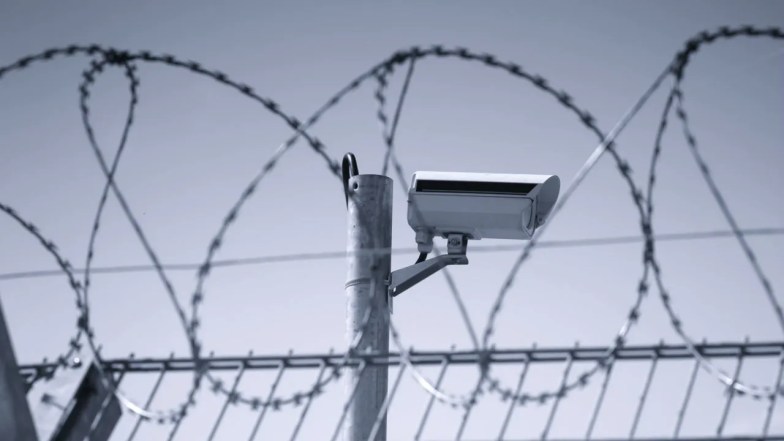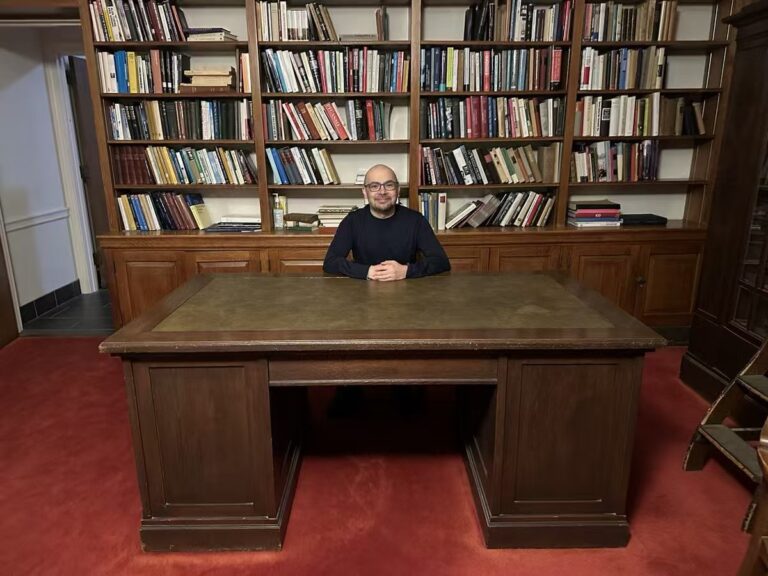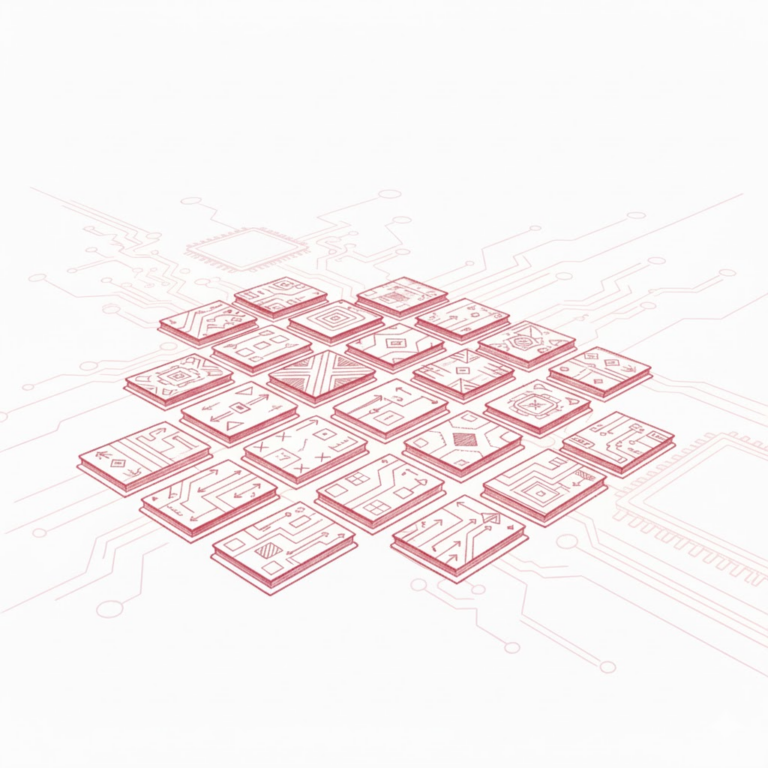Command Palette
Search for a command to run...
India Installs AI in Prisons to Monitor Malicious Incidents in 700 Prisons

Recently, an Indian company launched an AI video wall to monitor 70 prisons in India and analyze activities there. This is the first case of AI technology being applied to prisons in India. In fact, prisons in many countries have already moved towards digital and intelligent management. What do you think of the black technology in prisons?
Indians have great imagination in all walks of life. Even prisons in use can be turned into tourist attractions. In February this year, a report released by the New Delhi media said that India'sTihar JailIt will be open to the public and tourists can enter by purchasing tickets.One-day tour of the prison.

Located on the outskirts of New Delhi, this 160-hectareTihar Jail, the largest prison in Asia, houses around 15,000 inmates.
The Indian government opened the prison in the hope that the project would bring in more revenue for the government.
According to staff at Tihar Jail, after paying the fee, tourists will be placed under "temporary custody".Food, clothing, housing and transportation are all "enjoyed" by prisoners, and they will even be assigned to do some odd jobs, just like real prisoners.

The reason why India can open its prisons for tourists to visit is, firstly, because the prison environment in India has been improved through artificial intelligence technology, and there is a strong foundation to ensure the safety and experience of tourists; secondly, it is because they really want to generate income.
There are too many criminals. The prisons can no longer accommodate them and they can no longer control them.
Let’s take a look at what the prison environment is like in India, the world’s second most populous country with a population of 1.3 billion.
According to a report by the Criminal Policy Research Institute, as of September 30, 2018, there are more than 10 million prisoners living in prisons around the world, of whichIndia accounts for 3.9%, with 410,000 prisoners. The occupancy rate of Indian prisons is 114%. In states such as Madhya Pradesh (208%) and Uttar Pradesh (168%), the occupancy rate is even higher and the prisons are overcrowded.Therefore, in India, which has the second highest crime rate in the world, even with the largest prison in Asia, it still seems insufficient.

And because of this, Indian prisons have long existedInsufficient staff and fundsFor example, Tihar Jail recruited half the manpower it actually needed. Prisons in states like Uttar Pradesh, Bihar and Jharkhand are more stringent, so they have fewer staff at the rank of jailer, prison guard and supervisor level.More than 65% of positions are vacant.
These problems inevitably lead toPrisons have poor sanitary conditions, and there is an increase in violent conflicts.Jailbreaks are also reported to be common.
In 2007, a rare and vicious jailbreak occurred in Chhattisgarh, a northern Indian state. Nearly 150 prisoners suddenly attacked and held hostage more than 20 prison guards during a police inspection.

The prisoners quickly seized the guards' pistols, took 20 guards hostage, cut off the power supply, and completely controlled the prison.
Afterwards, the prisoners took complete control of the entire prison. They locked all the prison doors from the inside and cut off all the prison's electrical circuits and telephone lines, plunging the entire prison into darkness as night fell.
They did not intend to escape from prison, but just wanted to fight for some rights. However, this incident also shocked the Indian government's supervision of prisons.
However, recently, a company called Staqu AI facial recognition startupBringing AI technology to Indian prisons, comprehensively monitoring any disturbance in the prison. Whether it is criminals escaping from prison, fighting, or abnormal violence and bribery by prison guards, these phenomena may soon be put to an end by high technology.
Prison surveillance takes over, every move is clearly visible
Staqu has cooperated with the police many times. This time, they brought 「AI monitoring system」, will be used to analyze activities in Uttar Pradesh jails. Uttar Pradesh has now deployed an AI-enabled video analytics platform developed by Staqu in 70 prisons across the state. JARVIS, for multifunctional analysis.

The platform will analyze the content of 700 surveillance cameras installed in these prisons. The platform analyzes activities in prisons includingUnauthorized use of cell phones, knives, firearms, etc., as well as violations such as officer visits to prisoners, crowd analysis, violent behavior, unauthorized entry, etc..
If the platform detects any illegal or unlawful activity that should have been reported, it will inform the prison authorities so they can take prompt action.
The analytics platform uses AI algorithms combined with object recognition and computer vision techniques to analyze images captured from different CCTV sources.Over a million violent videosTraining was conducted.
Staqu said that the AI model99.6% accuracyThey have completed the first phase of JARVIS integration in one month, covering locations over a 900 km radius.

Many prisons, both in India and elsewhere, are unable to completely restrict the movements of prisoners inside, providing a strong rationale for the use of video surveillance.
The Indian Judiciary Report 2019 mentioned above states that the number of vacant posts in prisons is over 20%, with Uttar Pradesh ranking second after Jharkhand with a vacancy rate of 68.1% for cadre posts and 71.6% for officer posts.Video walls can replace manual labor and alleviate the pressure of prison staff shortages.
“We are happy to integrate a state-of-the-art solution that will closely monitor and review all activities taking place in the prison cells. As the wave of digitization sweeps across India, we need such smart and advanced solutions to ensure total safety and well-being of the civil society,” said Anand Kumar, Director General of Prisons, Uttar Pradesh, in a press statement.
Atul Rai, co-founder and CEO of Staqu, said: “This is a proud moment for us, adding yet another outstanding solution to the AI-based homeland security technology. JARVIS is no longer just science fiction; we are making intelligent video analytics a reality for the Indian police, starting with our deployment in Uttar Pradesh."

Security systems purchased by India and Dubai
Staqu also said that they are also working on using JARVIS for other security applications. Currently, they are looking to integrate it with local police forces in several states such as Haryana, Rajasthan, Bihar, etc.
This Gurgaon, India-based startup didn’t start out as a smart policing company. It was founded in 2015 as an AI-based recommendation engine for content providers and smartphones.

In 2017, it turned to securityAtul Rai said that at the time, the police were still using traditional methods to sift through hours of video surveillance to identify faces from their own databases, which was a very tedious task. "Our AI system can accurately identify people as long as they are given a photo of them.If there are 10-12 images, the accuracy will exceed 99%."Said Rai.
In addition to India, Dubai police hope to reduce crime by 25% by 2021. So they chose Staqu's AI-based predictive policing technology from more than 677 startups.
If prisons use black technology, will vicious incidents still happen?
In India, this is the first time that AI-based video analysis has been used in prisons, but many other countries have already deployed the system. Smart prisons have become a trend in modern prisons. Prison authorities in several states in the United States are already using surveillance systems thatUsing speech recognition and machine learning to monitor prisoners and their conversations, looking for suspicious language or phrases that could suggest conspiracy or criminal activity, such as plotting to smuggle, threats of violence or self-harm.

In addition, the U.S. criminal justice system uses GPS Ankle Monitor, tracking the location of individuals to ensure they comply with the terms of parole, such as avoiding certain places and staying home after a certain time each night. This saves a lot of money compared to adding extra beds in prisons. In addition to monitoring criminals, AI systems will also helpIdentify and reduce police violence, bribery, etc.
We have seen many prison escapes in movies and TV shows, and such incidents are also inevitable in real-world prisons. It is undeniable that under the "iron wall" of technological layout, the possibility of vicious incidents in prisons happening again is almost non-existent.
At the same time, technology also saves a lot of time for prison management and provides more convenient tools to ensure prison supervision. The safety and stability of prisons are also an important guarantee for the harmonious development of society.Technology is bringing about a new change in judicial police work.The thorny problems in traditional prison management may become a thing of the past.
-- over--








